Cosmetic upper and lower blepharoplasty are very popular throughout the world. The goal of these procedures is to improve the aesthetics of the eyes by addressing excess and sagging upper eyelid skin, as well as the appearance of puffy under eye bags, which are often associated with genetics, and aging. Other issues which can be addressed in the eye area include upper and lower eyelid hollowing, wrinkles, and dark circles, which may be addressed non-surgically.
As an oculoplastic surgeon specializing in aesthetic procedures, I perform a wide range of cosmetic eyelid procedures as well as treat complications of eyelid surgery originally performed by other doctors. I have throughout my career developed several techniques in eyelid surgery to allow for minimal incisions, safer anesthesia, and quicker recovery.
It’s important to understand some basic principles. In a younger person, the skin quality, tissue volume, and bone structure give the upper eyelids a youthful appearance. The supporting structures of the eyelids can change due to genetics, aging, and medical issues. The upper eyelid area can have fat pockets prolapse forward, hollowing due to lack of fat, and excess or stretched skin referred to as dermatochalasis.
Bags under the eyes, which are caused by lower eyelid fat prolapse, are often associated with genetics and affect many young people. Under eye bags are also often seen with facial aging. It’s common to see both excess upper eyelid skin, and other upper eyelid issues concurrently with under eye bags.
Another issue affecting the upper eyelids, which is commonly associated with aging is upper eyelid ptosis. Ptosis means that the eyelid position is lower than it should be and the position is unrelated to the weight of the upper eyelid skin. Ptosis has to do with the muscle that raises the eyelid called the levator muscle. This condition needs to be identified before any cosmetic procedure so the muscle which lifts the eyelids is addressed at the time of surgery.
For many people, the appearance of excess skin on the upper eyelids, puffy eyelids, and hooded eyes can be frustrating. Many of our patients note how difficult it is to apply makeup to the upper eyelids if they have hooded eyes, or if they lack an eyelid crease. Being perceived as aged or lacking energy is also a common complaint. In fact, the appearance of looking tired even when well-rested is one of the most common reasons for inquiring about eyelid procedures. These conditions affecting both the upper and lower eyelids often occur concurrently, so wanting to have both upper and lower eyelids done at the same time is a frequent request. There are specific procedures used to address hooded upper eyelids, and puffy under eyes specifically, depending on the degree of severity and the underlying cause.
Botox Brow Lift for Mild Upper Eyelid Sagging
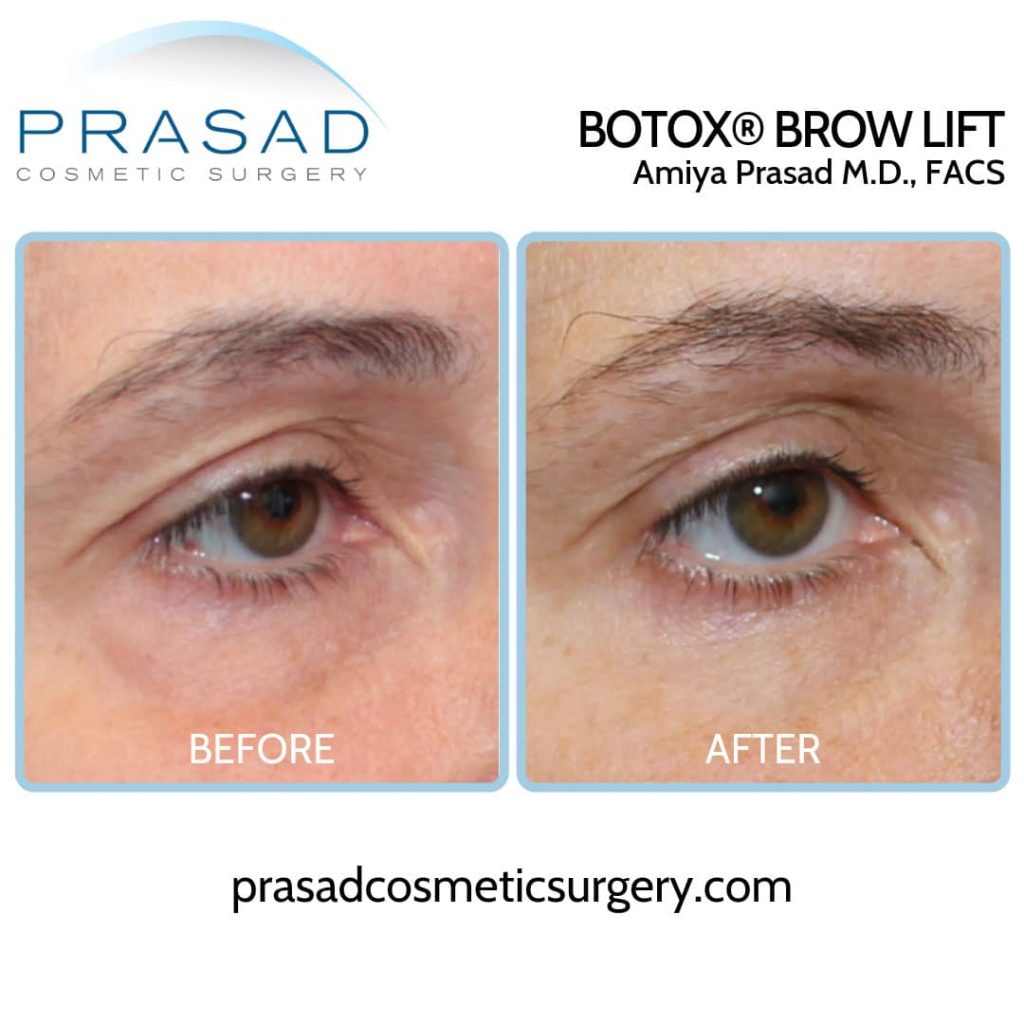
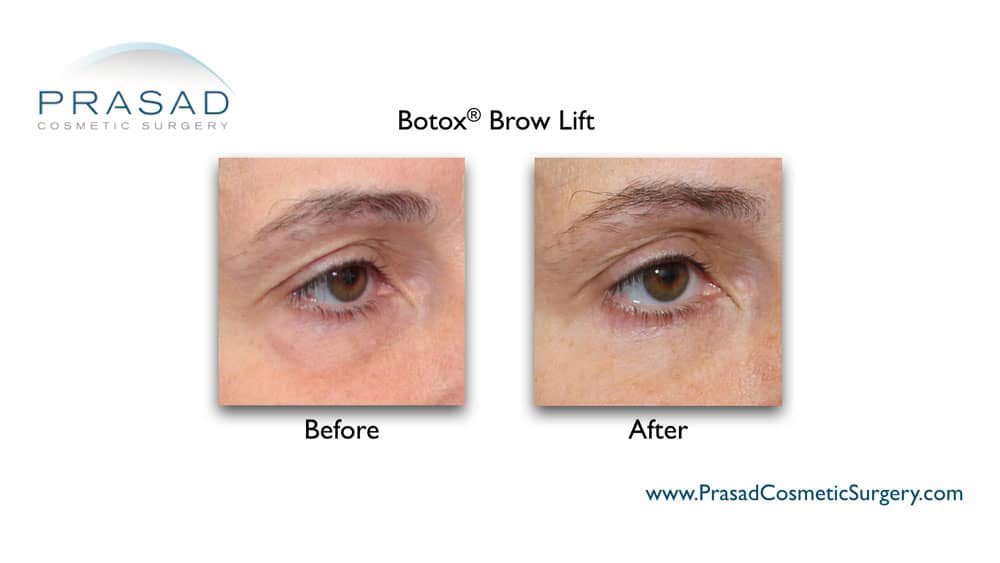
The appearance of hooded upper eyelids may be improved non-surgically in some cases, albeit temporarily with a procedure called a Botox brow lift if the cause of upper eyelid fullness is caused by brow position only. If the brow position has descended more significantly, surgical brow lifting options may be considered as well. If there is excess or sagging skin over the eyes, the more definitive and long-term solution is an upper eyelid blepharoplasty.
What is Upper Blepharoplasty?
An upper eyelid blepharoplasty is a procedure for restoring the upper eyelid’s shape and contour, creating a more rested and refreshed appearance. Excess upper eyelid skin is carefully measured, and a design drawn to map the excess skin and additional tissue below the skin so they are artistically contoured so the eyes look refreshed and natural afterwards. Gentle handling of this delicate tissue with meticulous care allows for minimal bruising and swelling after surgery, resulting in quicker recovery.
Read upper eyelid surgery
View upper blepharoplasty before and after pictures
What is Lower Blepharoplasty?
As far as under eye bags are concerned, there are usually two approaches, which are considered, these are the transcutaneous approach, or the transconjunctival approach. The transcutaneous approach involves making an incision right below the eyelashes to access the prolapsed orbital fat that causes eye bags. This approach typically leaves an external scar, and is an approach that can potentially lead to complications due to compromise of lower eyelid support structures. In addition, unnecessary skin removal by doctors attempting to address wrinkles can contribute to problems such as lower eyelid ectropion and lower eyelid retraction. For most of my patients, regardless of age and ethnicity, I prefer the transconjunctival approach. This procedure is considered technically more complex, but in my hands has proven to be safe with minimal risk of complications. Patients find this approach particularly advantageous as I’m able to maintain the natural shape of the eyes to avoid the rounded look, which is seen all too commonly after the transcutaneous approach, which is compounded by unnecessary lower eyelid skin removal. Preserving the shape of the eyes allows me to provide my patients with confidence about retaining their character, while looking more refreshed.
View lower blepharoplasty before and after pictures
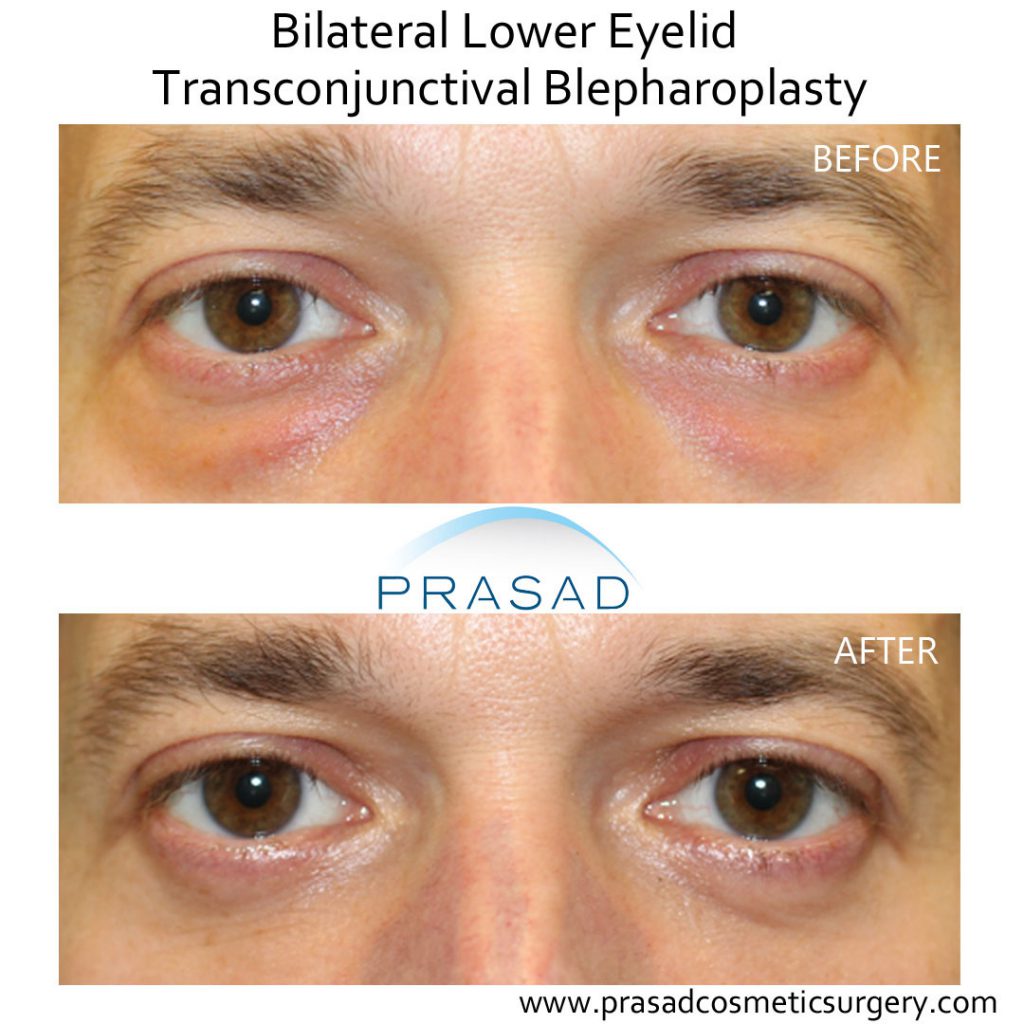
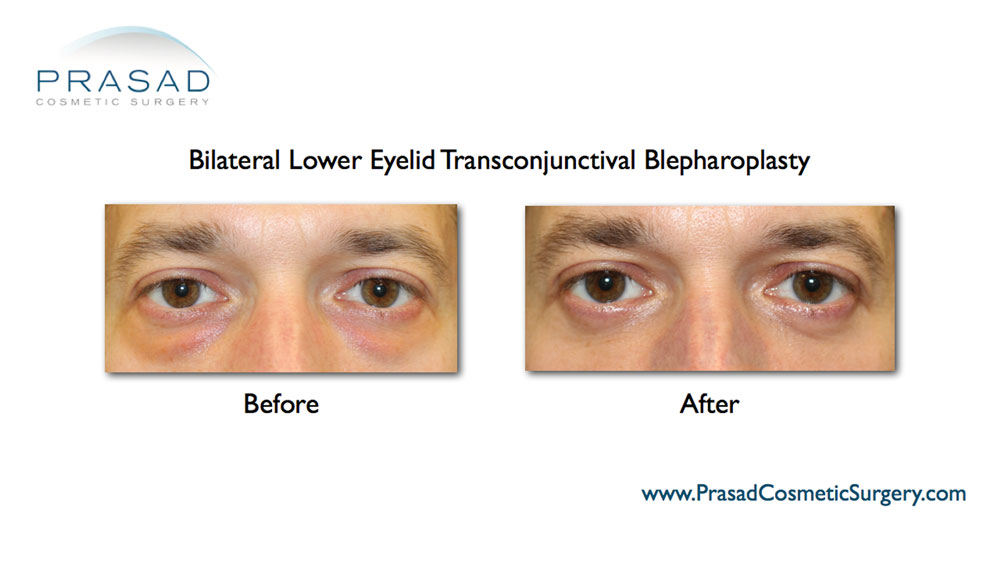
Specialized procedures for upper eyelid ptosis or drooping upper eyelids due to a weakened levator muscle, can be performed at the same time as addressing upper eyelid skin, and under eye bags. Specialized surgery like ptosis correction is done almost exclusively by oculoplastic or oculofacial plastic surgeons like myself, and not general plastic or cosmetic surgeons.
I routinely perform upper and lower eyelid surgery with any of the additional more advanced procedures at the same time.
Patient Convenience, and Saving on Costs by Combining Surgeries
Combining upper and lower eyelid surgery can reduce the time a patient spends in surgery, their recovery time, and costs for the patient as compared to doing these surgeries separately. The patient saves time spent in surgery, as well as the downtime recovering from one operation rather than recovering from two procedures done separately. Saving time, especially in recovery, is added time for work or leisure. Costs are also saved in operating room time, support staff, and anesthesia, which would be doubled if the upper, and lower eyelid surgeries are done on separate occasions.
Upper and Lower Blepharoplasty Before and After
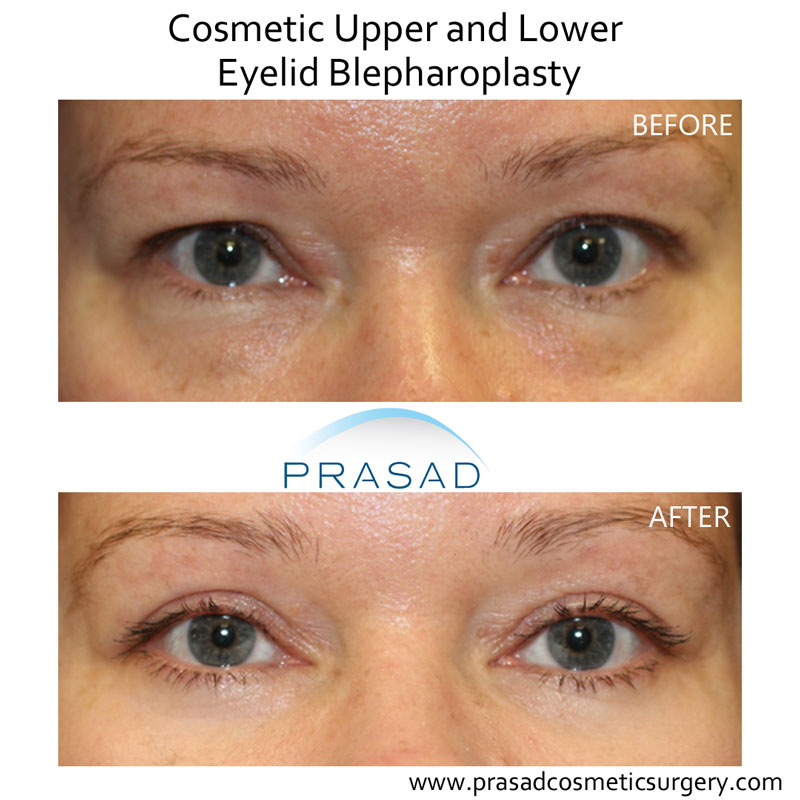
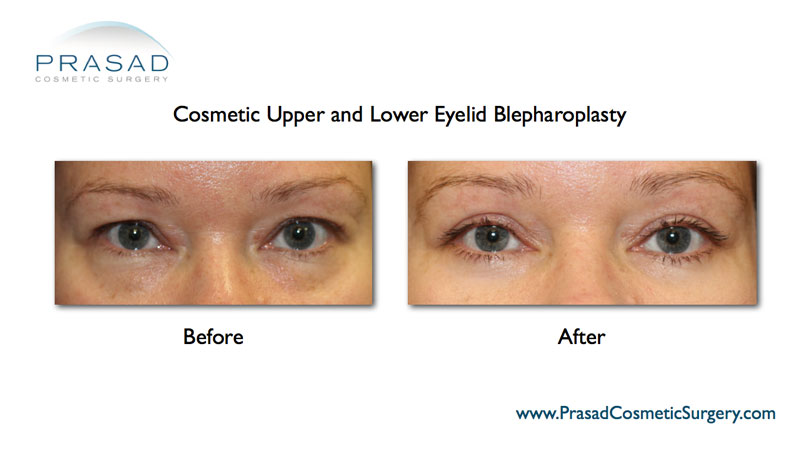
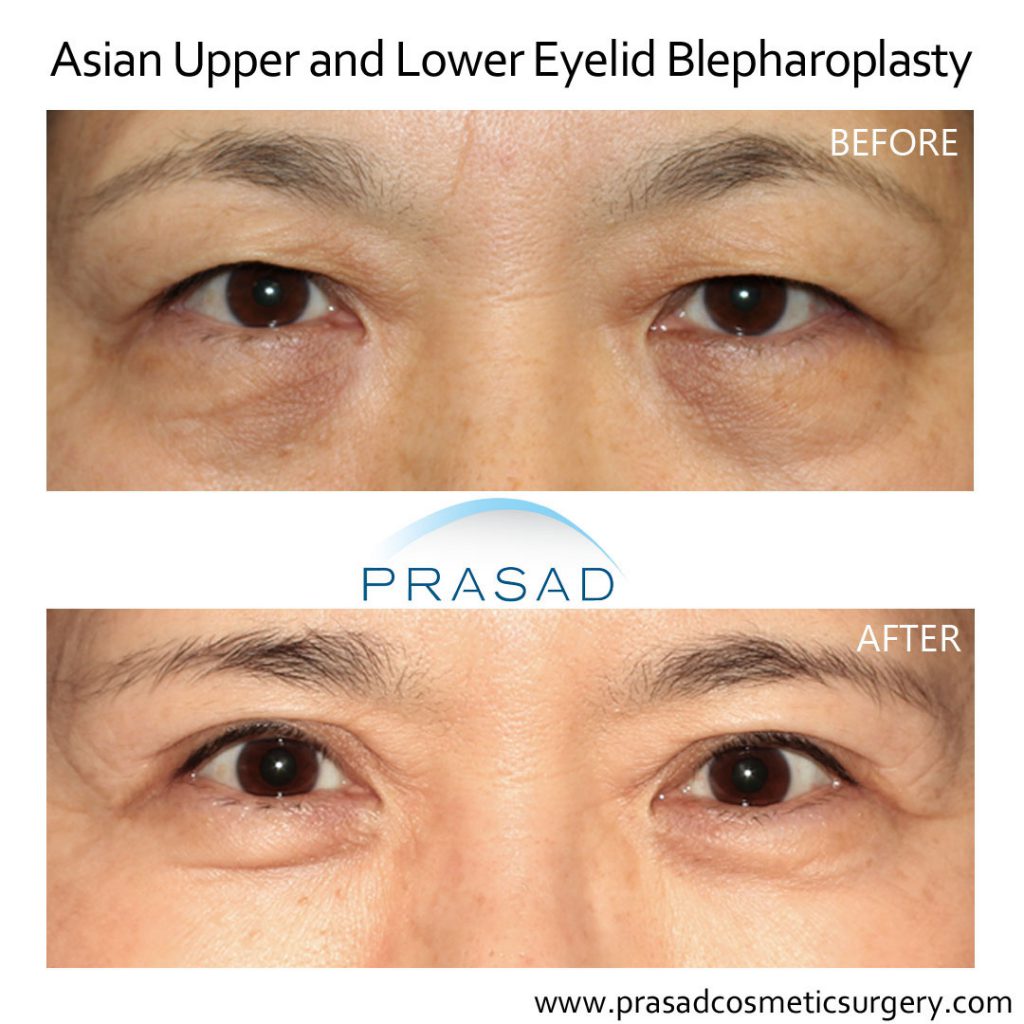

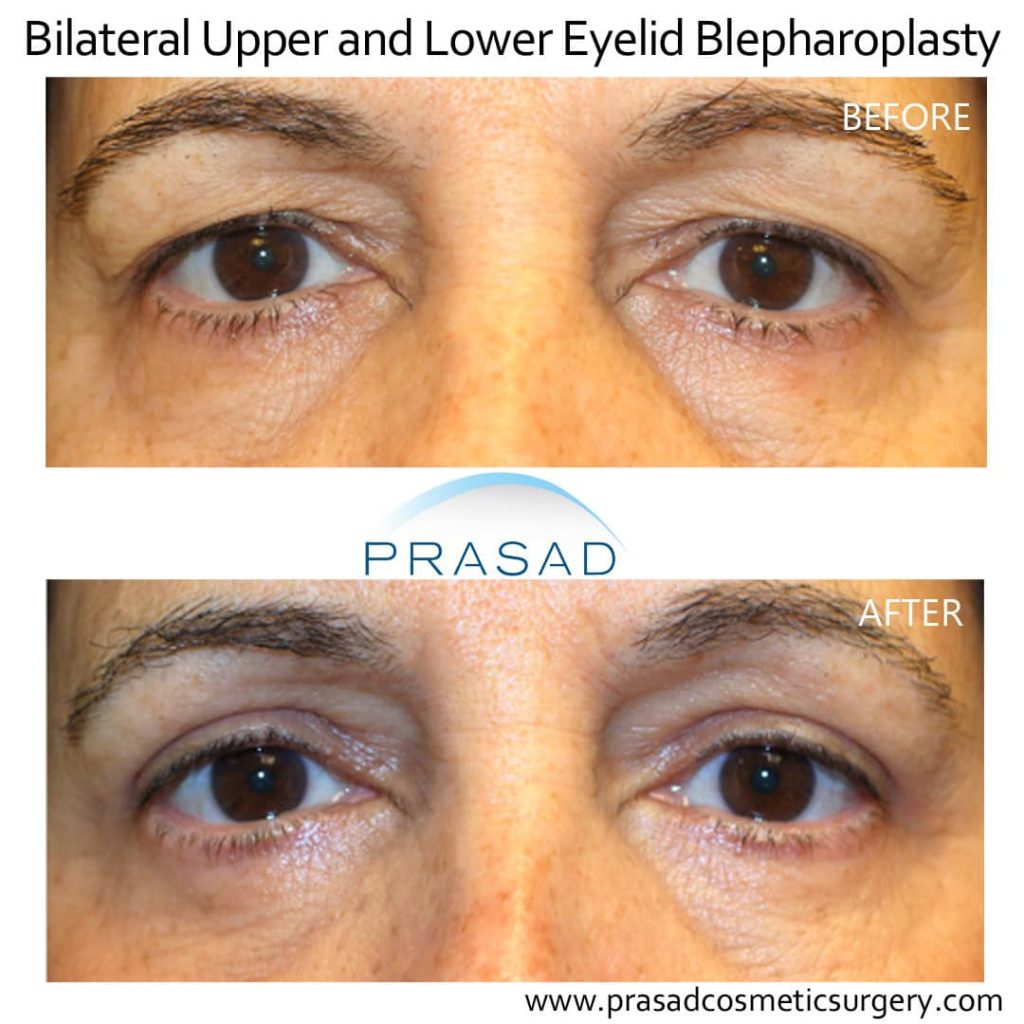
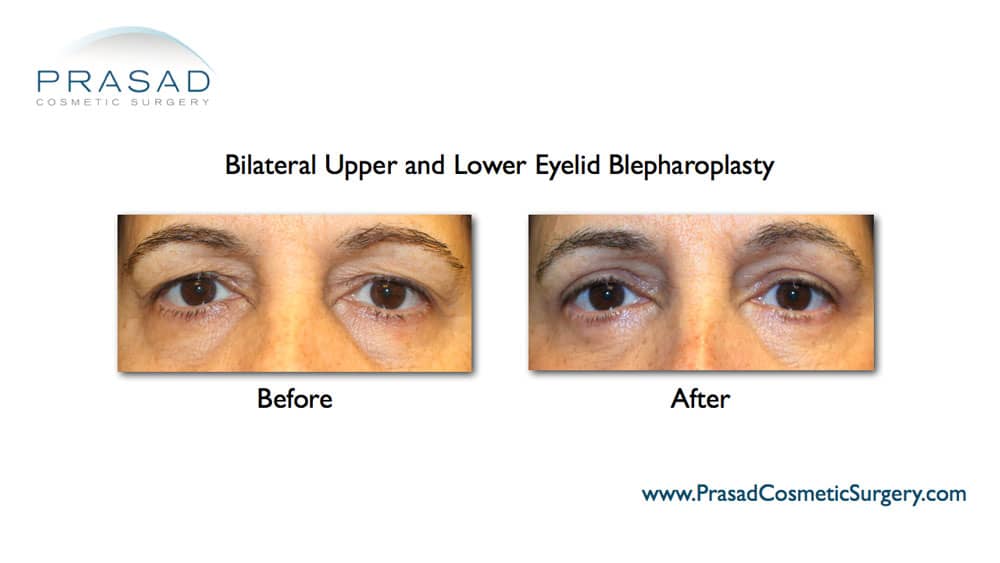
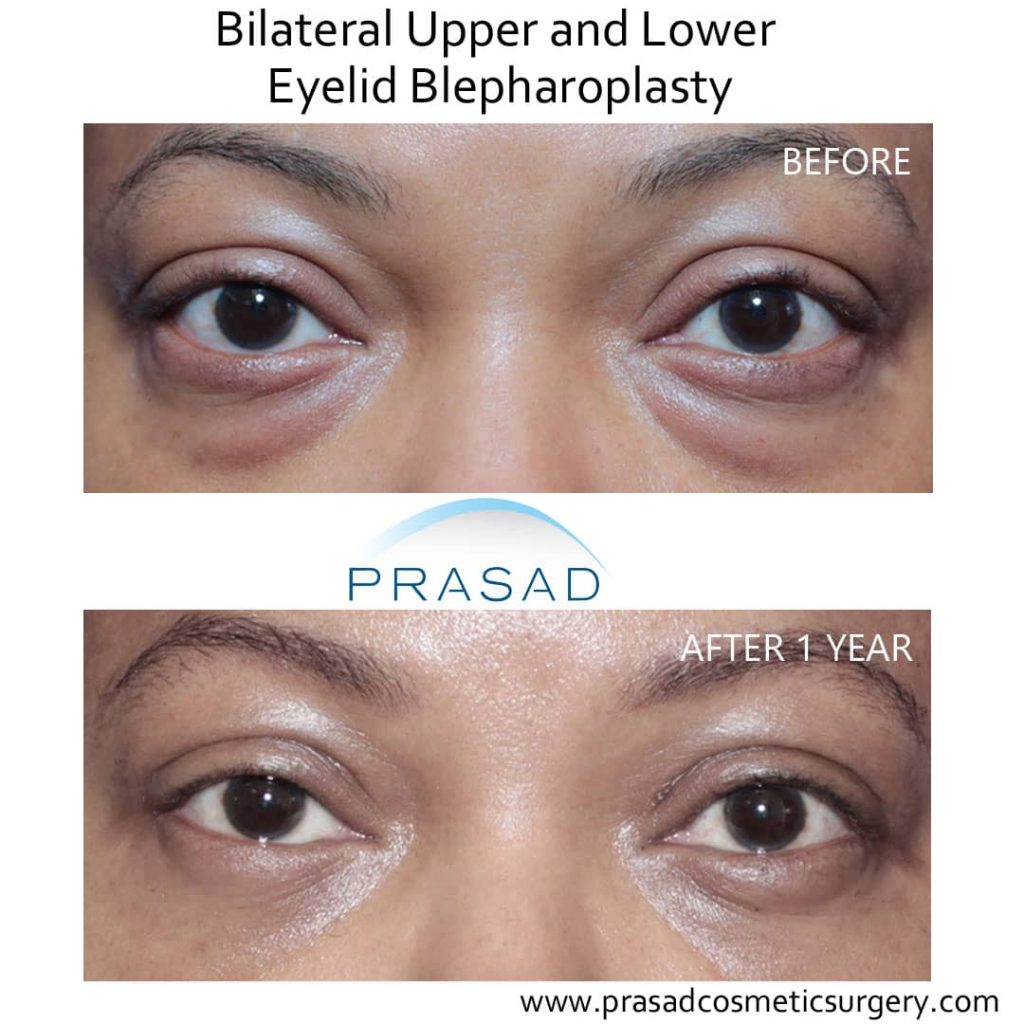
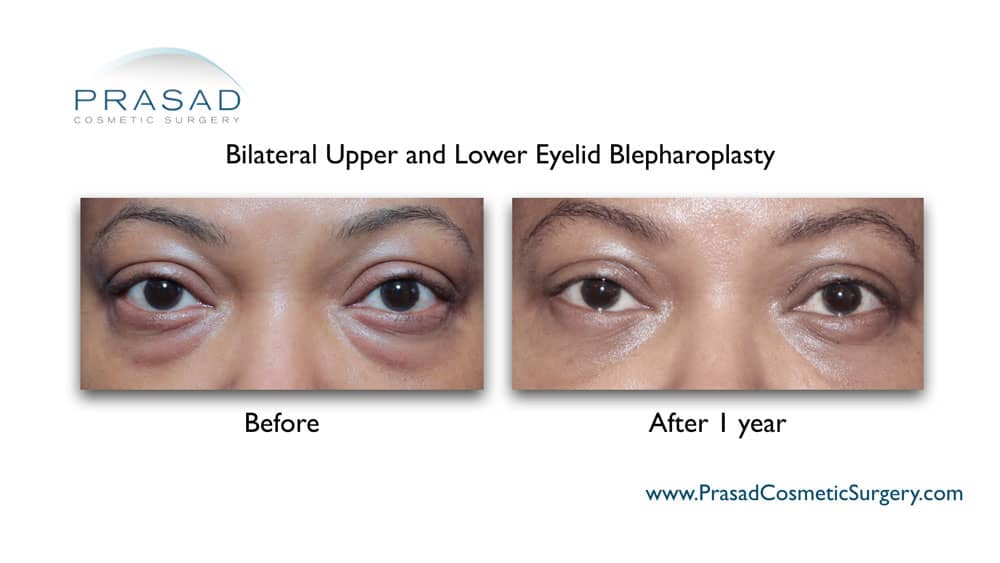
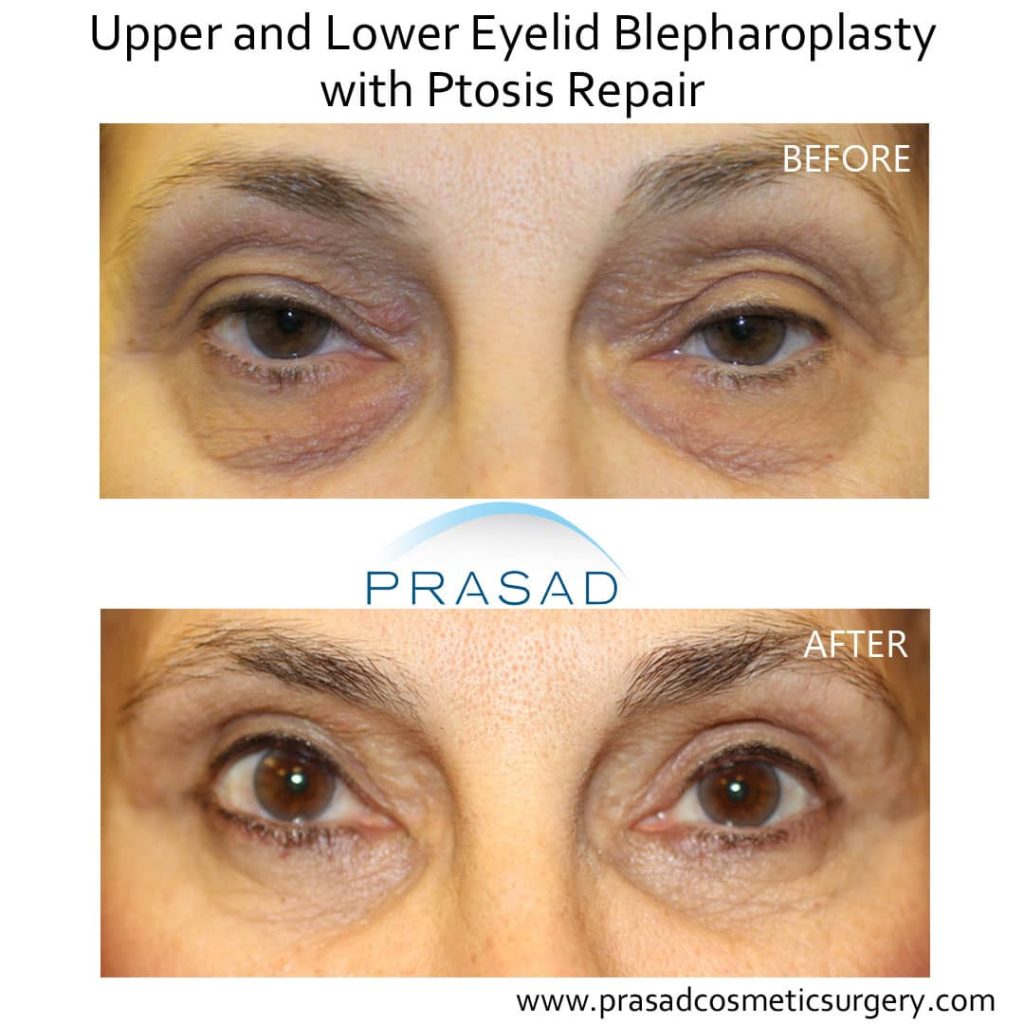

All procedures are performed using local anesthesia with LITE™ IV sedation, which means an easier recovery and less downtime in comparison to eyelid surgery performed under general anesthesia. The upper eyelids heal extremely well and the area where sutures are placed blends very well with the adjacent skin, even when the eyes are closed. Upper and lower eyelid surgery when performed together usually takes less than 2 hours. Minimal bruising and swelling are typical after upper or lower eyelid surgery and my patients routinely go back to work in 1 week.
Upper and Lower Blepharoplasty Recovery Photos
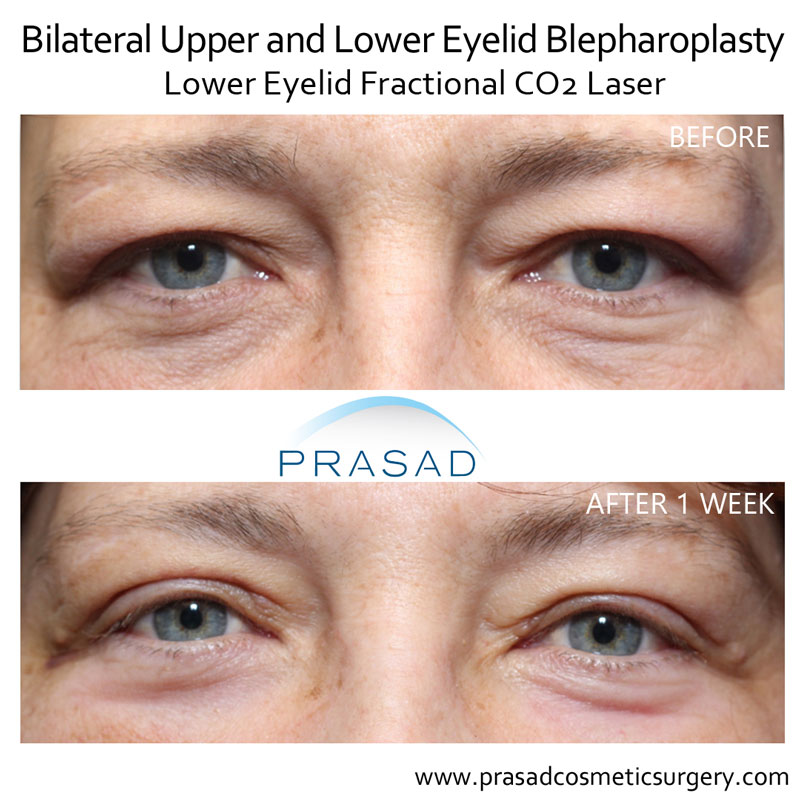
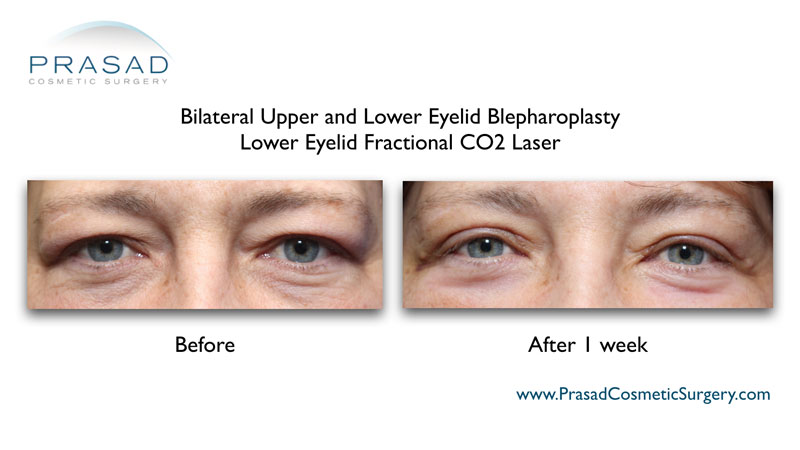
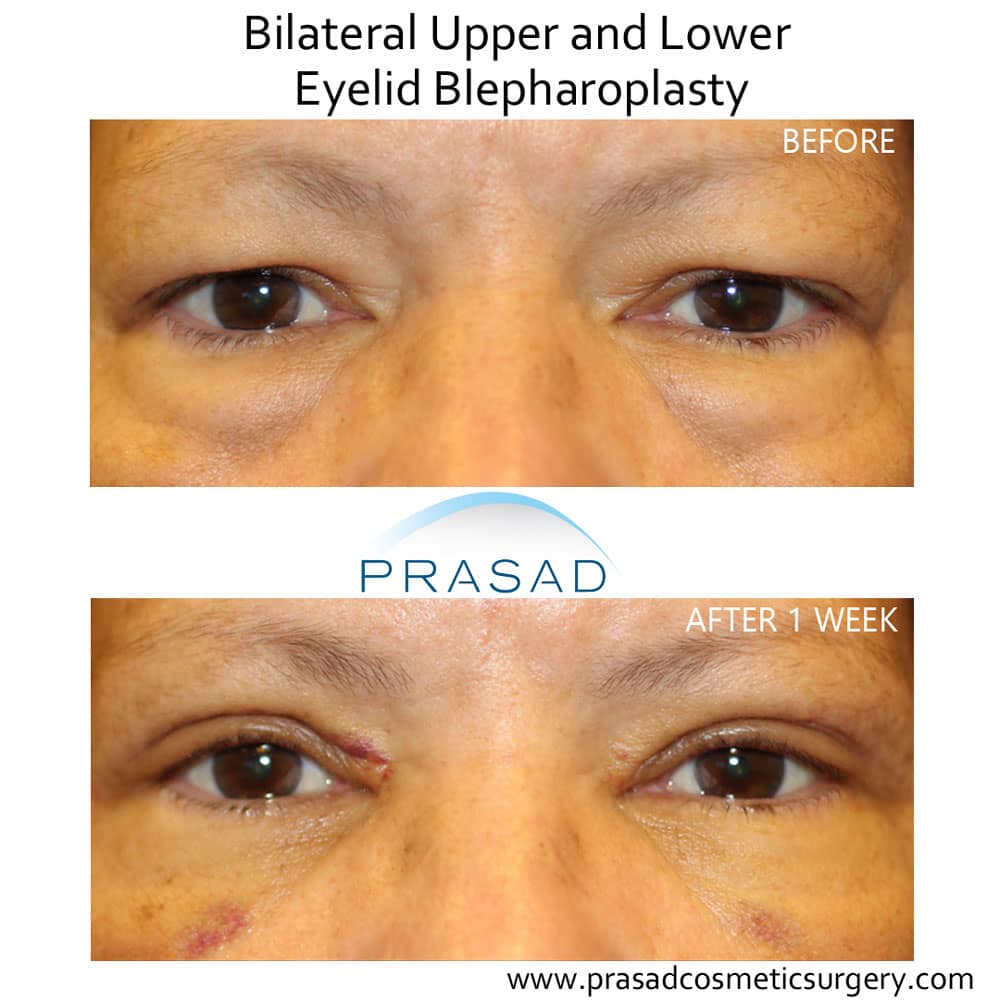
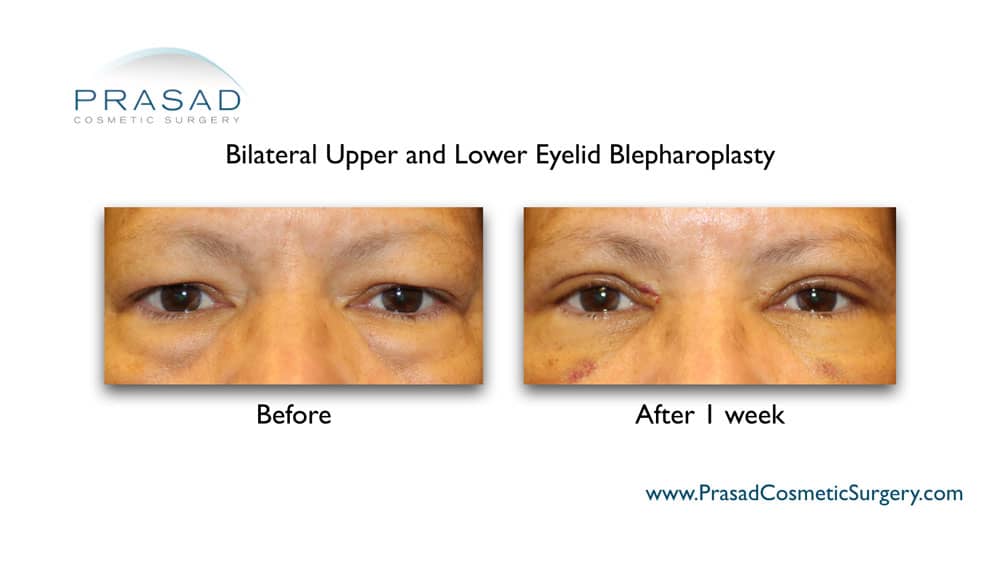
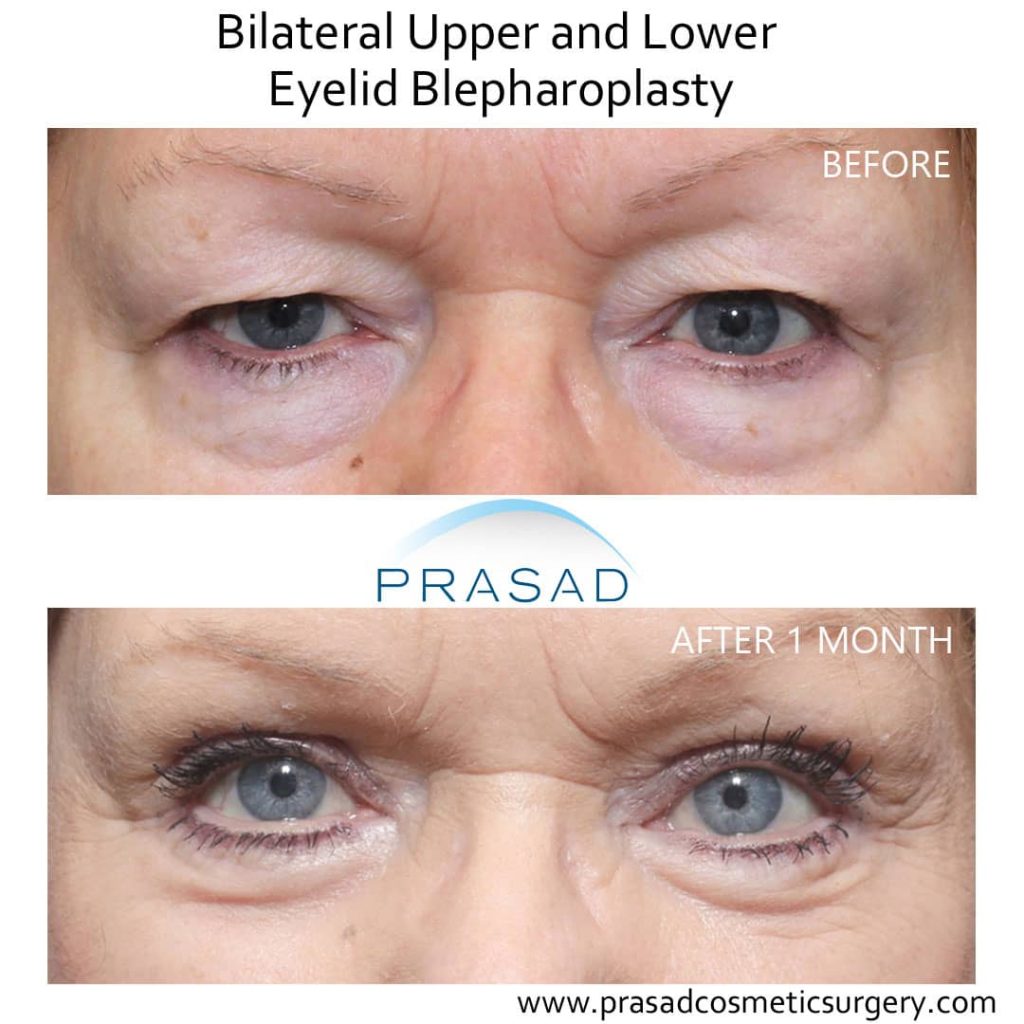
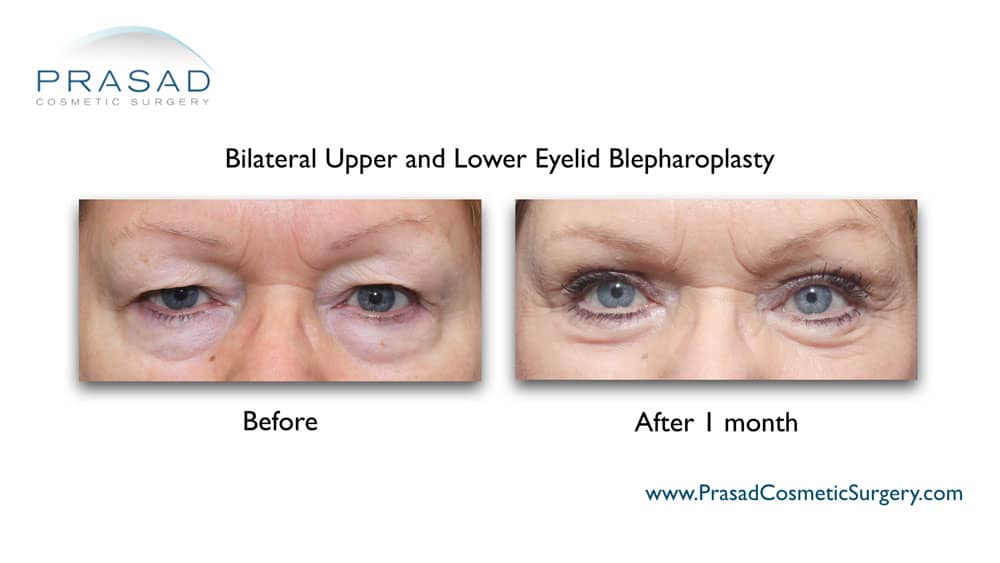
Upper and Lower Blepharoplasty Manhattan, NYC and Garden City, Long Island New York
Upper and lower eyelid surgery can be performed at the same time with minimal risk and quick recovery. I recommend meeting with qualified and experienced oculofacial plastic and reconstructive surgeons who specialize in cosmetic eyelid surgery so you can learn about your options.
